CHAPTER 1
1901 - 1909
My life began 4
June 1901 at Basin. Cassia County, Idaho. A farming and stock raising
community about four miles east of Oakley, Idaho laying at the foot
of the mountains, a beautiful place as I can remember it. There were
few settlers and one store, a post office, schoolhouse and an L.D.S.
church. I was born about one fourth mile south of Aunt Siss's place.
(Nellie Dayley told me this), in a small two room house on the east
side of the road facing west, close to the old tithing office, across
the street from the old brick church. The night I was born it was so
cold it froze all the fruit and vegetables.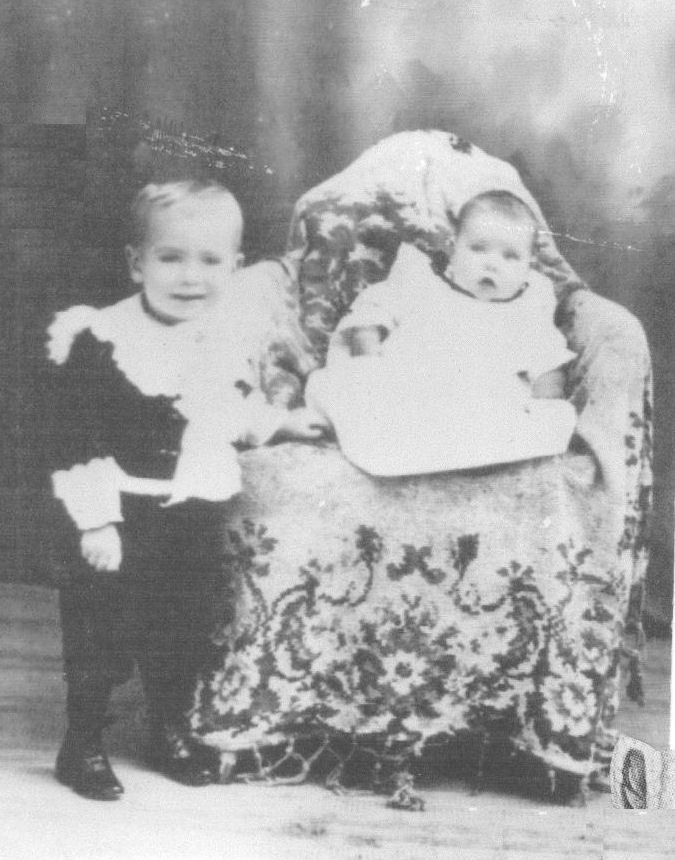
Vyla as a baby and Valoris.
I was born of
goodly parents. Basin Ward records certificate of birth number 22351.
My father was Charles Wiseman Dayley son of Enoch Rhodes and Gennette
Cooley Dayley. He was born July 14, 1867 at Grantsville, Tooele,
Utah. My mother was Carrie Melissa Sanford. She was born June 18,
1874 at Warm Creek. Millard. Utah. The daughter of Emulous Sanford
and Catherine Emma Cloward. 
Enoch Rhodes Dayley
and Gennette Cooley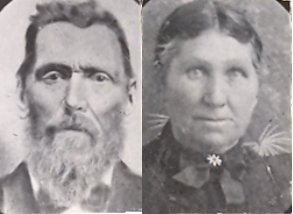
Emulous Sanford and
Catherine Emma Cloward
Grandfather Enoch was the son of James Dayley and was born in Grandview, Caldwell County Missouri September 19, 1837. He died in Basin, Idaho on November 13, 1892. He went through many persecutions of the saints. He came across the plains driving an ox team.
Grandma Gennette Dayley was a daughter of John William Cooley and Hannah Gould. She was born 20 December 1836 in New Castle, New Brunswick, Canada. She walked across the plains at the age of 16. Her mother and infant brother had died. She died 6 February 1927 at the home of her daughter Nettie Parker in Burley at the age of 91.
I lived in Basin
with my parents and older brother Valorus, who went by Slim, and
younger brother Myrl until November 28, 1904 when we moved to the
Burley project where father homesteaded a farm three miles west and
three fourths south of Burley. We were just above the canal and
opposite where The Starr's Ferry Builders are now located. How well I
remember that day, I was about three and a half years old. I remember
getting my little broom and sweeping the floor. There was dust all
over. It was a one room log house with a dirt roof.
The Basin LDS Meetinghouse
When it rained we had to put pans all around to catch the water. After a few years father put a partition in so we had two smaller rooms which was better and a little later we built another room on the west. The house was lined with muslin and whitewashed with lime and water. It smelled so good. By now we had quit a nice home for the times.
Sagebrush was
all we could see in every direction. We had all the wood we needed
just outside the door. At first they cleared the ground with a
grubbing hoe but later had a rail pulled by horses. There were big
bonfires at night. It lit up everything so pretty and smelled so
good. And boy were they hot fires. 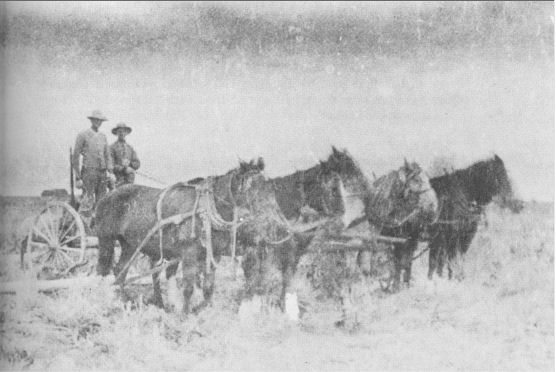
Early settlers clearing sagebrush near Burley
We had to haul water from the river three fourths miles to the north. They would put barrels in the wagons and back out into the river and dip the water up with buckets.
More settlers were coming all the time. Henroids and Egans (both from Basin) were the ones I remember best. The Egans were about three quarters mile north and the Henroids half mile south and west. I remember the day Janette was born. We older kids were at Egans playing. It was May 19, 1907. We had tubs of water and would run through them and one had a break in it and I cut a big gash in my knee.
The night Delbert was born it was Opal Henroid's birthday and I tried to stay all night (June 20). Well I got homesick in the night and Sister Henroid had to walk me home.
Sometimes we
could see the smoke of the train over on the main line in Kamimia
many miles away. What a thrill it was to see that much of a train.
Soon the railroad came and people were coming from every where and
Burley was booming.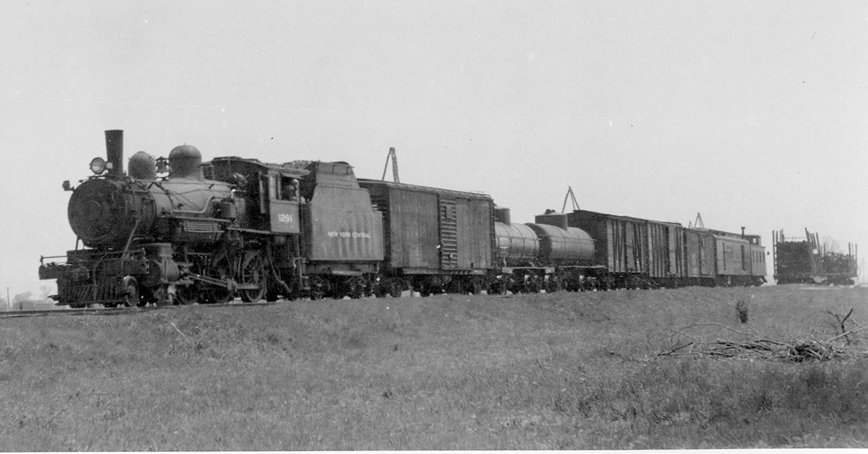
A typical locomotive of the time
More and more people were coming all the time. We kids had heard the men talking about filing on land so one day we took a file and went to where there was a little pond of water we called it a lake to file on it.
In about 1906 the government made canals all over the project to water the land. Father worked on these canals and was paid in script (paper money). The First Lift Canal went right through our land and not far from the house on the north. We kids and neighbors spent many happy hours playing in the water but I never did learn to swim.
Soon we had
plenty of water and planted an orchard and trees and crops. Father
made a cistern and filtered the water from the ditch through gravel,
charcoal, and a screen for drinking and cooking. We still had to
carry water from the canal for washing and had to heat it on the
stove and then wash on a board. 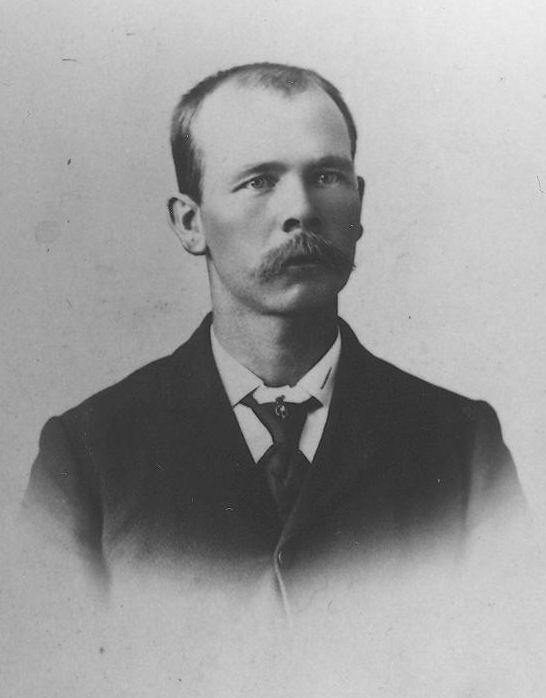
Charles Wiseman Dayley
Father invented a water headgate for the laterals and had it patented but had no money to manufacture it. After his patent ran out, someone else did make it. They are now and have been in use for many years all over the project.
The first school I remember going to was on the corner of Main Street and Albion Avenue. My teacher was Miss Galogly. Her brother was an undertaker. We had to walk to school most of the time. That building was used for many things and was the laundry where I was working when I met my future husband. (1920) it has been replaced with a brick building and is now a garage.
One school I went to was a little frame building on the corner of the Andie Anderson farm about a mile and a half south of our home. The teacher was Mr. Nimrod Goode. I read of his death last year (1954). The country was growing so fast now that we finally got our own country school district and two concrete buildings were erected. One on the west known as Starr's Ferry school (because of a ferry crossing on the river earlier owned by a Mr. Starr) The other one on the south-east was called the Palisade School. They were about the same distance and in the same district. Later a frame building was put to the side of each of these where the four younger grades went. I went to both of these at different times and graduated from the 8th grade at Starr under Mrs. Edith E. Geck. The teacher was also the janitor. We all had to drink out of a bucket with a dipper in it. The coats were all hung in a corner and we had to go outside to the bathroom. The school was heated with a coal stove in one corner. Can you see it? I still can.
We always had to
walk (one and three fourths miles). Many times in the winter, snow
drifts were over the fences and crusted till we could walk on top of
it. Sometimes we would wrap our feet in gunny sacks to try to keep
them warm. Mother always had a nice hot supper ready for us when we
got home. Boy! that good old hot bread and butter. Nice hot beans and
cold milk. I wish they would taste that good now.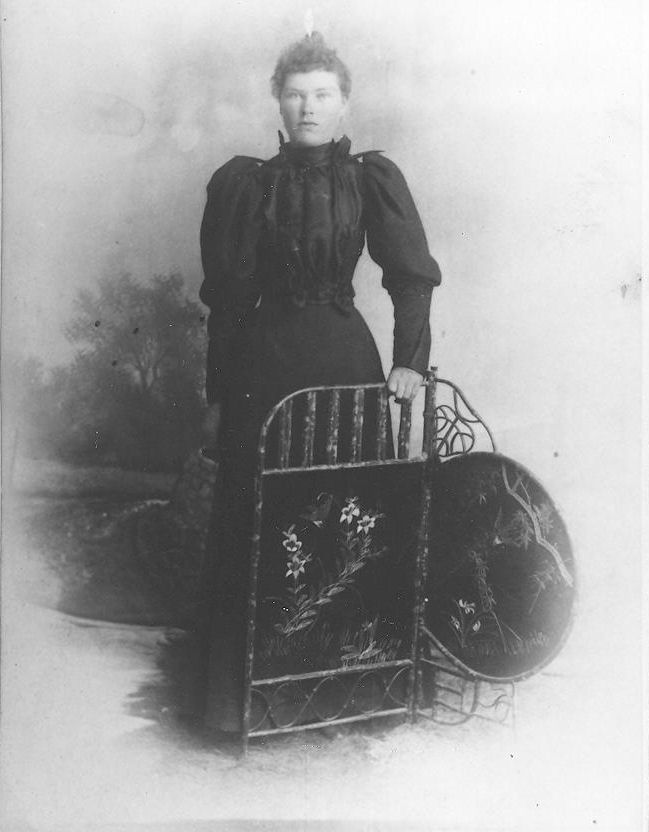
We were then a branch of the Cassia Stake (now Oakley Idaho Stake) There was an empty house owned by Fred Schodde close to the river where we held meetings. In a few years (1906) we had our own Burley Ward. A frame building was built where the present building now stands, only a new building has been built 1958. Now (1979) the building is no longer in use. A new building is now in that spot. It was heated by two cast Iron pot bellied stoves. Lorenzo Robbins was the first bishop (Verlee's Uncle). We were nearly four miles away and not good transportation so we didn't get to Primary and Sunday School as much as we should have.
Chapter 2